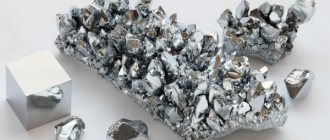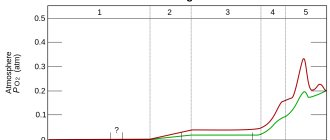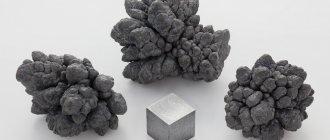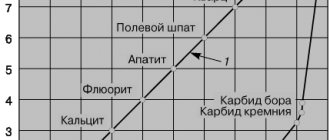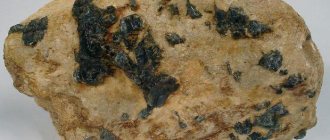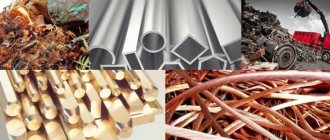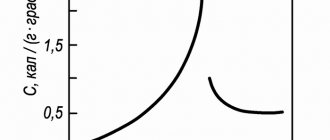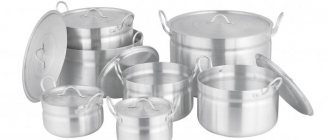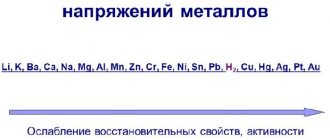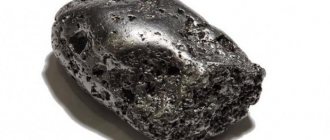Historical reference.
The first information about oxygen became known in Europe from Chinese manuscripts of the 8th century. At the beginning of the 16th century. Leonardo da Vinci published data related to the chemistry of oxygen, not yet knowing that oxygen was an element. Reactions of oxygen addition are described in the scientific works of S. Geils (1731) and P. Bayen (1774). K. Scheele's research in 1771–1773 on the interaction of metals and phosphorus with oxygen deserves special attention. J. Priestley reported the discovery of oxygen as an element in 1774, a few months after Bayen's report of reactions with air. The name oxygenium (“oxygen”) was given to this element shortly after its discovery by Priestley and comes from the Greek words meaning “acid-producing”; this is due to the misconception that oxygen is present in all acids. The explanation of the role of oxygen in the processes of respiration and combustion, however, belongs to A. Lavoisier (1777).
History of discovery
It is officially believed that oxygen was discovered by the English chemist Joseph Priestley on August 1, 1774 by decomposing mercuric oxide in a hermetically sealed vessel (Priestley directed sunlight at this compound using a powerful lens).
2HgO →ot 2Hg + O2↑
However, Priestley initially did not realize that he had discovered a new simple substance; he believed that he had isolated one of the constituent parts of air (and called this gas “dephlogisticated air”). Priestley reported his discovery to the outstanding French chemist Antoine Lavoisier. In 1775, A. Lavoisier established that oxygen is a component of air, acids and is found in many substances.
A few years earlier (in 1771), oxygen was obtained by the Swedish chemist Karl Scheele. He calcined saltpeter with sulfuric acid and then decomposed the resulting nitric oxide. Scheele called this gas “fire air” and described his discovery in a book published in 1777 (precisely because the book was published later than Priestley announced his discovery, the latter is considered the discoverer of oxygen). Scheele also reported his experience to Lavoisier.
An important step that contributed to the discovery of oxygen was the work of the French chemist Pierre Bayen, who published works on the oxidation of mercury and the subsequent decomposition of its oxide.
Finally, A. Lavoisier finally figured out the nature of the resulting gas, using information from Priestley and Scheele. His work was of enormous importance because thanks to it, the phlogiston theory, which was dominant at that time and hampered the development of chemistry, was overthrown. Lavoisier conducted experiments on the combustion of various substances and disproved the theory of phlogiston, publishing results on the weight of the burned elements. The weight of the ash exceeded the original weight of the element, which gave Lavoisier the right to claim that during combustion a chemical reaction (oxidation) of the substance occurs, and therefore the mass of the original substance increases, which refutes the theory of phlogiston.
Thus, the credit for the discovery of oxygen is actually shared between Priestley, Scheele and Lavoisier.
The structure of the atom.
Also on topic:
AIR
Any naturally occurring oxygen atom contains 8 protons in the nucleus, but the number of neutrons can be 8, 9 or 10. The most common of the three isotopes of oxygen (99.76%) is 168O (8 protons and 8 neutrons). The content of another isotope, 188O (8 protons and 10 neutrons), is only 0.2%. This isotope is used as a label or for identifying certain molecules, as well as for conducting biochemical and medico-chemical studies (a method for studying non-radioactive traces). The third non-radioactive isotope of oxygen, 178O (0.04%), contains 9 neutrons and has a mass number of 17. After the mass of the carbon isotope 126C was adopted by the International Commission as the standard atomic mass in 1961, the weighted average atomic mass of oxygen became 15.9994. Until 1961, chemists considered the standard unit of atomic mass to be the atomic mass of oxygen, assumed to be 16,000 for a mixture of three naturally occurring isotopes of oxygen. Physicists took the mass number of the oxygen isotope 168O as the standard unit of atomic mass, so on the physical scale the average atomic mass of oxygen was 16.0044 ( see also
ATOMIC MASS).
An oxygen atom has 8 electrons, with 2 electrons in the internal level and 6 electrons in the outer level. Therefore, in chemical reactions, oxygen can accept up to two electrons from donors, building up its outer shell to 8 electrons and forming an excess negative charge ( see also
ATOMIC STRUCTURE).
Molecular oxygen.
Like most other elements, the atoms of which lack 1–2 electrons to complete the outer shell of 8 electrons, oxygen forms a diatomic molecule. This process releases a lot of energy (~490 kJ/mol) and, accordingly, the same amount of energy must be spent for the reverse process of dissociation of the molecule into atoms. The strength of the O–O bond is so high that at 2300° C only 1% of oxygen molecules dissociate into atoms. (It is noteworthy that during the formation of the nitrogen molecule N2, the strength of the N–N bond is even higher, ~710 kJ/mol.)
Reactions.
Under appropriate conditions, molecular oxygen reacts with almost any element except the noble gases. However, under room conditions, only the most active elements react with oxygen quickly enough. It is likely that most reactions occur only after the dissociation of oxygen into atoms, and dissociation occurs only at very high temperatures. However, catalysts or other substances in the reacting system can promote the dissociation of O2. It is known that alkali (Li, Na, K) and alkaline earth (Ca, Sr, Ba) metals react with molecular oxygen to form peroxides:
Chemical properties
A strong oxidizing agent, the most active nonmetal after fluorine, forms binary compounds ( oxides
) with all elements except helium, neon, argon. The most common oxidation state is −2. As a rule, the oxidation reaction proceeds with the release of heat and accelerates with increasing temperature (see Combustion). Example of reactions occurring at room temperature:
Oxidizes compounds that contain elements with less than the maximum oxidation state:
2NO+O2→2NO2↑{\displaystyle {\mathsf {2NO+O_{2}\rightarrow 2NO_{2}\uparrow }}}
Oxidizes most organic compounds in combustion reactions:
2C6H6+15O2→12CO2+6H2O{\displaystyle {\mathsf {2C_{6}H_{6}+15O_{2}\rightarrow 12CO_{2}+6H_{2}O}}} CH3CH2OH+3O2→2CO2+3H2O{ \displaystyle {\mathsf {CH_{3}CH_{2}OH+3O_{2}\rightarrow 2CO_{2}+3H_{2}O}}}
Under certain conditions, it is possible to carry out mild oxidation of an organic compound:
CH3CH2OH+O2→CH3COOH+H2O{\displaystyle {\mathsf {CH_{3}CH_{2}OH+O_{2}\rightarrow CH_{3}COOH+H_{2}O}}}
Oxygen reacts directly (under normal conditions, with heating and/or in the presence of catalysts) with all simple substances except Au and inert gases (He, Ne, Ar, Kr, Xe, Rn); reactions with halogens occur under the influence of an electrical discharge or ultraviolet radiation. Oxides of gold and heavy inert gases (Xe, Rn) were obtained indirectly. In all two-element compounds of oxygen with other elements, oxygen plays the role of an oxidizing agent, except for compounds with fluorine (see below).
Oxygen forms peroxides
with the oxidation state of the oxygen atom formally equal to −1.
For example, peroxides are produced by the combustion of alkali metals in oxygen:
2Na+O2→Na2O2{\displaystyle {\mathsf {2Na+O_{2}\rightarrow Na_{2}O_{2}}}}
Some oxides absorb oxygen:
2BaO+O2→2BaO2{\displaystyle {\mathsf {2BaO+O_{2}\rightarrow 2BaO_{2}}}}
According to the combustion theory developed by A. N. Bach and K. O. Engler, oxidation occurs in two stages with the formation of an intermediate peroxide compound. This intermediate compound can be isolated, for example, when a flame of burning hydrogen is cooled with ice, hydrogen peroxide is formed along with water:
H2+O2→H2O2{\displaystyle {\mathsf {H_{2}+O_{2}\rightarrow H_{2}O_{2}}}}
In superoxides, oxygen formally has an oxidation state of −½, that is, one electron per two oxygen atoms (O−2 ion). Obtained by reacting peroxides with oxygen at elevated pressure and temperature:
Na2O2+O2→2NaO2{\displaystyle {\mathsf {Na_{2}O_{2}+O_{2}\rightarrow 2NaO_{2}}}}
Potassium K, rubidium Rb and cesium Cs react with oxygen to form superoxides:
K+O2→KO2{\displaystyle {\mathsf {K+O_{2}\rightarrow KO_{2}}}}
Inorganic ozonides contain the O−3 ion with the oxidation state of oxygen formally equal to −1/3. Obtained by the action of ozone on alkali metal hydroxides:
3KOH+3O3→2KO3+KOH∗H2O+2O2↑{\displaystyle {\mathsf {3KOH+3O_{3}\rightarrow 2KO_{3}+KOH*H_{2}O+2O_{2}\uparrow })}
In the dioxygenyl ion O2+, oxygen formally has an oxidation state of +½. Obtained by the reaction:
PtF6+O2→O2PtF6{\displaystyle {\mathsf {PtF_{6}+O_{2}\rightarrow O_{2}PtF_{6}}}}
In this reaction, oxygen exhibits reducing properties.
Oxygen fluorides
Oxygen difluoride, OF2, oxidation state of oxygen +2, is prepared by passing fluorine through a dilute alkali solution:
2F2+2NaOH→2NaF+H2O+OF2↑{\displaystyle {\mathsf {2F_{2}+2NaOH\rightarrow 2NaF+H_{2}O+OF_{2}\uparrow }}}
Oxygen monofluoride (dioxydifluoride), O2F2, is unstable, the oxidation state of oxygen is +1. Obtained from a mixture of fluorine and oxygen in a glow discharge at a temperature of −196 °C:
F2+O2→O2F2{\displaystyle {\mathsf {F_{2}+O_{2}\rightarrow O_{2}F_{2}}}}
By passing a glow discharge through a mixture of fluorine and oxygen at a certain pressure and temperature, mixtures of higher oxygen fluorides O3F2, O4F2, O5F2 and O6F2 are obtained.
Quantum mechanical calculations predict the stable existence of the trifluorohydroxonium ion OF3+. If this ion really exists, then the oxidation state of oxygen in it will be equal to +4.
Oxygen supports the processes of respiration, combustion, and decay.
In its free form, the element exists in two allotropic modifications: O2 and O3 (ozone). As Pierre Curie and Marie Sklodowska-Curie established in 1899, under the influence of ionizing radiation O2 transforms into O3.
Receipt and application.
Due to the presence of free oxygen in the atmosphere, the most effective method of extracting it is by liquefying the air, from which impurities, CO2, dust, etc. are removed. chemical and physical methods. The cyclic process includes compression, cooling and expansion, which leads to air liquefaction. With a slow rise in temperature (fractional distillation method), first noble gases (the most difficult to liquefy) evaporate from liquid air, then nitrogen, and liquid oxygen remains. As a result, liquid oxygen contains traces of noble gases and a relatively large percentage of nitrogen. For many applications these impurities are not a problem. However, to obtain oxygen of extreme purity, the distillation process must be repeated. Oxygen is stored in tanks and cylinders. It is used in large quantities as an oxidizer for kerosene and other fuels in rockets and spacecraft. The steel industry uses oxygen gas to blow through the molten iron using the Bessemer method to quickly and effectively remove C, S and P impurities. Oxygen blast produces steel faster and of higher quality than air blast. Oxygen is also used for welding and cutting metals (oxy-acetylene flame). Oxygen is also used in medicine, for example, to enrich the respiratory environment of patients with difficulty breathing. Oxygen can be produced by various chemical methods, and some of them are used to obtain small quantities of pure oxygen in laboratory practice.
How is liquid oxygen produced?
The oxygen we breathe is a kind of “mix” of nitrogen, oxygen and argon. The mixture also contains carbon dioxide (0.03%), hydrogen, nitrous oxide and other rare gases. In order to convert oxygen into a liquid state, it is necessary to cool the air. At a pressure of 50 atmospheres and an air temperature from -191.8 to -193.7, deep cooling of the air is achieved and its transition to a liquid state.
After this, rectification is carried out, that is, the separation of nitrogen from oxygen. This is achieved by repeatedly heating the liquid, during which the nitrogen first evaporates, and the remaining liquid is enriched with O2.
Thermal dissociation.
An important laboratory method for producing oxygen, proposed by J. Priestley, is the thermal decomposition of heavy metal oxides: 2HgO ® 2Hg + O2. To do this, Priestley focused the sun's rays on mercury oxide powder. A well-known laboratory method is also the thermal dissociation of oxo salts, for example potassium chlorate in the presence of a catalyst - manganese dioxide:
Manganese dioxide, added in small quantities before calcination, allows maintaining the required temperature and dissociation rate, and the MnO2 itself does not change during the process.
Methods for thermal decomposition of nitrates are also used:
as well as peroxides of some active metals, for example:
2BaO2® 2BaO + O2
The latter method was at one time widely used to extract oxygen from the atmosphere and consisted of heating BaO in air to form BaO2, followed by thermal decomposition of the peroxide.
The thermal decomposition method remains important for the production of hydrogen peroxide. SOME PHYSICAL PROPERTIES OF OXYGEN
| SOME PHYSICAL PROPERTIES OF OXYGEN | |
| Atomic number | 8 |
| Atomic mass | 15,9994 |
| Melting point, °C | –218,4 |
| Boiling point, °C | –183,0 |
| Density | |
| solid, g/cm3 (at temperature ) | 1,27 |
| liquid g/cm3 (at point ) | 1,14 |
| gaseous, g/dm3 (at 0° C) | 1,429 |
| air relative | 1,105 |
| criticala, g/cm3 | 0,430 |
| Critical temperaturea, °C | –118,8 |
| Critical pressurea, atm | 49,7 |
| Solubility, cm3/100 ml of solvent | |
| in water (0° C) | 4,89 |
| in water (100° C) | 1,7 |
| in alcohol (25° C) | 2,78 |
| Radius, Å | 0,74 |
| covalent | 0,66 |
| ionic (O2–) | 1,40 |
| Ionization potential, V | |
| first | 13,614 |
| second | 35,146 |
| Electronegativity (F=4) | 3,5 |
| a Temperature and pressure at which the densities of gas and liquid are the same. | |
[edit] Literature
- Glossary of terms in chemistry // J. Opeida, O. Shvaika. Institute of Physical-Organic Chemistry and Coal Chemistry named after. L. M. Litvinenko NAS of Ukraine, Donetsk National University - Donetsk: "Weber", 2008. - 758 p. ISBN 978-966-335-206-0
- F. A. Derkach “Chemistry” L. 1968
- Small mountain encyclopedia. In 3 volumes / Ed. V. S. Beletsky. - Donetsk: Donbass, 2004. - ISBN 966-7804-14-3.
- Mikhalichko B. M. Course of general chemistry. Theoretical foundations: Textbook. - M.: Knowledge, 2009. - 548 p. ISBN 978-966-346-712-2
- Kirichenko V.I. General chemistry: Textbook. - K.: Higher School, 2005. - 639 p. — (ill.) ISBN 966-642-182-8
| Periodic table of chemical elements by D. I. Mendeleev | |||||||||||||||||||||||||||||||
| H | He | ||||||||||||||||||||||||||||||
| Li | Be | B | C | N | O | F | Ne | ||||||||||||||||||||||||
| Na | Mg | Al | Si | P | S | Cl | Ar | ||||||||||||||||||||||||
| K | Ca | Sc | Ti | V | Cr | Mn | Fe | Co | Ni | Cu | Zn | Ga | Ge | As | Se | Br | Kr | ||||||||||||||
| Rb | Sr | Y | Zr | Nb | Mo | Tc | Ru | Rh | Pd | Ag | Cd | In | Sn | Sb | Te | I | Xe | ||||||||||||||
| Cs | Ba | La | Ce | Pr | Nd | Pm | Sm | Eu | Gd | Tb | Dy | Ho | Er | Tm | Yb | Lu | Hf | Ta | W | Re | Os | Ir | Pt | Au | Hg | Tl | Pb | Bi | Po | At | Rn |
| Fr | Ra | Ac | Th | Pa | U | Np | Pu | Am | Cm | Bk | Cf | Es | Fm | MD | No | Lr | Rf | Db | Sg | Bh | Hs | Mt | Ds | Rg | Cn | Nh | Fl | Mc | Lv | Ts | Og |
| Uue | Ubn | Ubu | Ubb | Ubt | Ubq | UBP | Ubh | ||||||||||||||||||||||||
| Alkali metals | Alkaline earth metals | Lanthanides | Actinoids | Superactinoids | Transition metals | Other metals | Semimetals | Other non-metals | Halogens | Noble gases | Properties unknown |
Hydrogen peroxide.
Another compound consisting only of hydrogen and oxygen is hydrogen peroxide H2O2. The name “peroxide” is adopted for compounds containing an –O–O– bond. Hydrogen peroxide has the structure of an asymmetrically bent chain:
Hydrogen peroxide is produced by the reaction of metal peroxide with acid
BaO2 + H2SO4® BaSO4 + H2O2
or by the decomposition of peroxodisulfuric acid H2S2O8, which is obtained electrolytically:
A concentrated solution of H2O2 can be obtained by special distillation methods. Hydrogen peroxide is used as an oxidizer in rocket engines. Dilute peroxide solutions serve as antiseptics, bleaches and mild oxidizing agents. H2O2 is added to many acids and oxides to produce compounds similar to hydrates. In the presence of a strong oxidizing agent (such as MnO2 or MnO4–), H2O2 oxidizes, releasing oxygen and water.
Oxoanions and oxocations
– oxygen-containing particles having a residual negative (oxoanions) or residual positive (oxocations) charge. The O2– ion has high affinity (high reactivity) for positively charged particles such as H+. The simplest representative of stable oxoanions is the hydroxide ion OH–. This explains the instability of atoms with a high charge density and their partial stabilization as a result of the addition of a particle with a positive charge. Therefore, when an active metal (or its oxide) acts on water, OH– rather than O2– is formed:
2Na + 2H2O ® 2Na+ + 2OH– + H2
or
Na2O + H2O ® 2Na+ + 2OH–
More complex oxoanions are formed from oxygen with a metal ion or non-metallic particle that has a large positive charge, resulting in a low-charge particle that is more stable, for example:
Symptoms in humans due to lack of oxygen in the air
The normal O2 content in the air is within 21%. When its quantity decreases as a result of combustion or displacement by inert gases (argon, helium), a lack of oxygen occurs, the consequences and symptoms of which are indicated in the table below.
| O2 content (% by volume) | Consequences and symptoms (at atmospheric pressure) |
| 15-19% | Decreased performance. Loss of coordination may occur. The first symptoms may appear in people with impaired coronary circulation, general circulation or pulmonary function |
| 12-14% | Difficulty breathing, increased heart rate, impaired coordination and perception. |
| 10-12% | Even deeper and faster breathing, loss of sanity, blue lips. When exposed to an atmosphere containing 12% or less O2, loss of consciousness occurs suddenly and so quickly that the person has no time to take any action. |
| 8-10% | Impaired thinking, fainting, loss of consciousness, deathly pale face, blue lips, vomiting. |
| 6-8% | 8 min - 100% lethal outcome; 6 min - 50%; 4-5 minutes - life can be saved with medical help. |
| 4-6%. | After 40 seconds - coma, convulsions, cessation of breathing, death from lack of oxygen. |
If the above symptoms are present, the victim should be quickly taken out into fresh air and given oxygen or artificial respiration. Immediate medical attention is required.
Inhalation of oxygen-rich air should be carried out under medical supervision.
Ozone.
In addition to atomic oxygen O and the diatomic molecule O2, there is a third form of oxygen - ozone O3, containing three oxygen atoms. All three forms are allotropic modifications. Ozone is formed by passing a quiet electrical discharge through dry oxygen: 3O2 2O3.
In this case, several percent of ozone is formed. The reaction is catalyzed by metal ions. Ozone has a sharp, pungent odor that can be detected near operating electrical machines or in the vicinity of atmospheric electrical discharge. The gas is bluish in color and condenses at –112°C into a dark blue liquid, and at –193°C a dark purple solid phase is formed. Liquid ozone is slightly soluble in liquid oxygen, and 49 cm3 of O3 dissolves in 100 g of water at 0° C. In terms of chemical properties, ozone is much more active than oxygen and is second only to O, F2 and OF2 (oxygen difluoride) in oxidizing properties. Conventional oxidation produces oxide and molecular oxygen O2. When ozone acts on active metals under special conditions, ozonides of the composition K+O3– are formed. Ozone is produced industrially for special purposes; it is a good disinfectant and is used to purify water and as a bleach, improves the condition of the atmosphere in closed systems, disinfects objects and food, and accelerates the ripening of grains and fruits. In a chemistry laboratory, an ozonizer is often used to produce ozone, which is necessary for some methods of chemical analysis and synthesis. Rubber is easily destroyed even when exposed to low concentrations of ozone. In some industrial cities, significant concentrations of ozone in the air lead to rapid deterioration of rubber products if they are not protected by antioxidants. Ozone is very toxic. Constant inhalation of air, even with very low concentrations of ozone, causes headaches, nausea and other unpleasant conditions.
In what areas is liquid oxygen used?
Currently, liquid oxygen is used in various fields of industry:
- chemical,
- glass,
- metallurgical,
- pharmaceutical,
- pulp and paper.
Liquid O2 serves as a raw material for the production of other chemical compounds, such as titanium dioxide or ethylene oxide. It can also be used to increase the productivity of most oxidative processes.
In the glass industry, oxygen is used to intensify combustion processes necessary to maintain the operation of glass melting furnaces. In addition, it helps reduce nitrogen oxide emissions and increase efficiency in glass production.
For the same purpose, liquid O2 is used in metallurgy, where it enriches the air and increases the efficiency of the combustion process.
Liquid oxygen is associated with acceleration of cell growth processes, so in pharmaceuticals it is added to fermenters and bioreactors.
In the pulp and paper industry, this type of oxygen is used for oxidative extraction, wastewater treatment and delignification (the process of producing cellulose).
In addition, liquid oxygen is used in the automotive and mechanical engineering industries, where it is used as an auxiliary gas during laser cutting. It is also added to protective gas mixtures.
